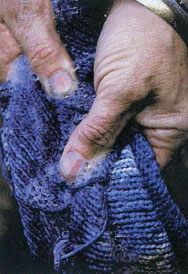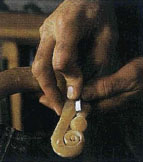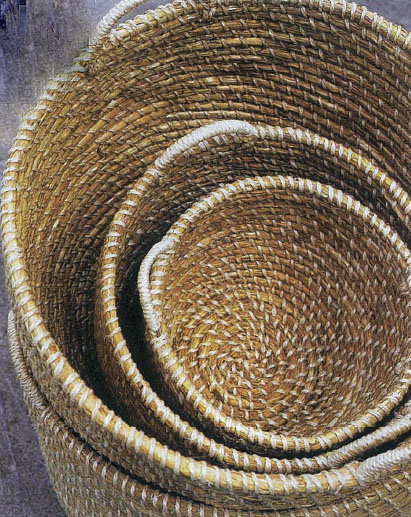
[caption id="TraditionalCrafts_img1" align="aligncenter" width="188"]

© SHANNON TOFTS
[caption id="TraditionalCrafts_img2" align="aligncenter" width="143"]

© SHANNON TOFTS
TRIPS TO THE U.K. usually include a certain amount of shopping—gifts for friends, family, and maybe something special for yourself. Bringing back a piece of history is a little more difficult, but well worth it.
Throughout the British Isles, craftspeople still work with traditional tools and materials to create items that have been made the same way for hundreds of years. I was reminded of this when the traditional crafts of Scotland were highlighted at last summer’s Smithsonian Folklife Festival on the Mall in Washington, D.C. I saw makers of boats, baskets, bagpipes, tapestries, tartans, silver goods, sporrans, and more. Watching the time-honoured objects take shape in their hands fascinated me. I learned about the several different types of bagpipes from Hamish Moore (including ones that don’t require blowing). I watched Graham Stewart incise decoration on a handsome silver cup. Graham had the honour of creating a silver bowl (opposite) with engraved, gold-plated interior, presented by the Caledonian Club to the Queen for her Golden Jubilee. On the table of Janet Eagleton MBE & Son, I saw many different elements that can go into the making of a custom sporran. The Eagletons are sporran makers for the Black Watch.
[caption id="TraditionalCrafts_img3" align="aligncenter" width="411"]

© SHANNON TOFTS
You may never again find such a conveniently gathered group of U.K. craftspeople this side of the Atlantic, so the thing to do is to search them out when you’re over there. They and their work are harder to find than the gift shop around the corner, but the rewards make up for it. These crafts are as much a part of history as the Tower of London, and you can’t take the Tower home.
If you’re lucky, you just may find the work of local craftspeople in a gift or souvenir shop, particularly those associated with museums or historic sites. The museum shop at the Museum of Welsh Life, St. Pagans, Cardiff, for example, carries traditional and contemporary crafts. If your tastes lean to contemporary crafts, shops at London’s V&A Museum and the British Museum carry them.
Consider timing your next visit to coincide with one of the major crafts shows that have work by traditionalists. Another way to find craftspeople is to stop by the visitor information centre in the cities and towns you visit. The staff often know about local craftspeople and can tell you where to find them. Many craftspeople welcome prospective customers to their homes and enjoy discussing their work with visitors. (This is also a great way to get to know local people.) The Tourist Information Centre in the Old Market Hall in Bakewell, Derbyshire, has its own shop with works by local craftsmen.
THE SCOTTISH ARTS COUNCIL OFFERS a list of guilds and their contact details; write or email them for a copy of the list, designated VAC14. If you have a particular interest, you could write to the appropriate guild in advance to find out who makes the kinds of things you want to see in the area you plan to visit.
We found a website for traditional craftspeople in the Peak District, Derbyshire (see box). It includes a number of traditional craftsmen, with telephone numbers or links to information about them, including contact details. They have shows throughout the year, detailed o n the website. Another source of information is Traditional Crafts Ltd. Their members have shows in south-central England, March through December, and take pride in allowing only handmade crafts. There are also several websites you can search by area and craft type. Expect to find more of these types of websites as traditional crafters become wiser to the ways of marketing on the web.
In the meantime, you’ll have to work a little harder to find that perfect bit of history to carry home with you.





Comments